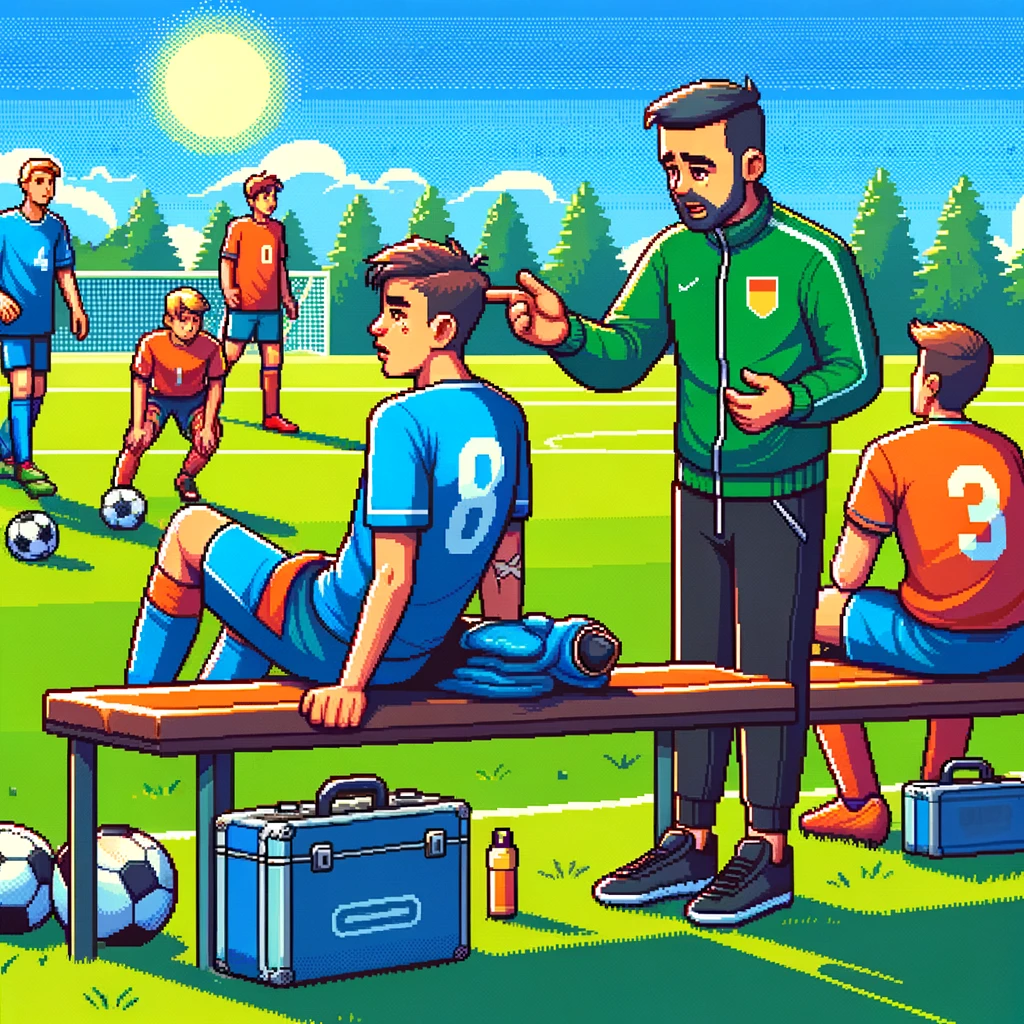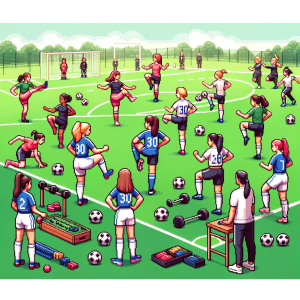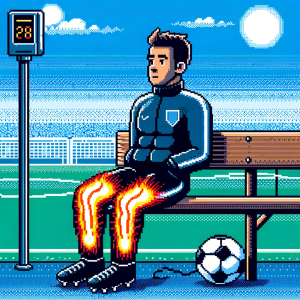
Overcoming Pain: Insights for Soccer Coaching
Introduction
In the world of sports, particularly soccer, injuries and pain are often seen as unavoidable hurdles. For young athletes, these experiences can be particularly challenging, impacting not only their physical abilities but also their emotional well-being.
A recent systematic review, “Adolescents’ Experience with Sports-Related Pain and Injury,” sheds light on the multifaceted experiences of adolescents dealing with sports-related pain and injuries. This blog aims to break down the findings of this review, highlighting its significance for soccer coaching and player development.
Understanding the Research
The study ynthesized qualitative research on adolescents aged 14-19 years, focusing on their experiences with sports-related pain and injuries. The review included 16 studies with 216 participants, covering various injuries such as severe knee injuries, concussions, and other musculoskeletal issues. The findings revealed a complex interplay of physical, emotional, and social factors influencing the recovery process.
Key Findings
- Emotional Impact and Coping Strategies Adolescents experience a range of emotions following an injury, including fear, isolation, and depressive responses. These emotions can significantly impact their motivation and approach to rehabilitation. Common coping strategies include ignoring symptoms, modifying activity levels, and seeking support from peers and family.
- Fear of Re-Injury A pervasive fear of re-injury is a major barrier for young athletes. This fear can lead to avoidance behaviors and hinder their return to sports. Educating players on the importance of proper rehabilitation and gradual return to activity can help mitigate these fears.
- Social Support Peer motivation and social support play crucial roles in an adolescent’s willingness to persist with rehabilitation. Encouraging a supportive team environment and maintaining connections with injured players can enhance their recovery experience.
- Positive and Negative Emotions While injuries can lead to negative emotions such as fear and isolation, they can also foster positive outcomes like motivation to rehabilitate and optimism about returning to sports. Coaches should focus on reinforcing positive experiences and addressing negative emotions constructively.
Implications for Soccer Coaching
Creating a Supportive Environment
For soccer coaches, understanding the emotional and social dimensions of sports injuries is vital. Building a supportive environment where players feel comfortable expressing their fears and challenges can enhance their recovery. Regular check-ins and open communication channels can help players feel valued and supported throughout their rehabilitation journey.
Emphasizing Proper Rehabilitation
Proper rehabilitation is crucial to prevent re-injury and ensure a successful return to sports. Coaches should collaborate with healthcare professionals to design individualized rehabilitation programs that address both physical and psychological needs. Encouraging adherence to these programs and celebrating small milestones can boost players’ confidence and motivation.
Peer Support and Team Dynamics
Team dynamics play a significant role in an adolescent’s recovery. Encouraging teammates to support their injured peers can create a positive atmosphere. Coaches can organize team activities that include injured players, ensuring they remain part of the team and do not feel isolated.
Education and Awareness
Educating players about the risks and realities of sports injuries is essential. Providing information on common injuries, proper techniques to avoid them, and the importance of reporting symptoms can empower players to take proactive steps in their health and safety.
Let us know below in the comments!
- How can soccer coaches better support injured players emotionally and socially during their recovery process?
- What strategies can be implemented to reduce the fear of re-injury among young athletes?
Conclusion
The findings from the systematic review by Sheehan et al. offer valuable insights into the experiences of adolescents dealing with sports-related pain and injuries. For soccer coaches, integrating these insights into their coaching strategies can significantly enhance player development and well-being. By fostering a supportive environment, emphasizing proper rehabilitation, and encouraging peer support, coaches can help young athletes navigate the challenges of injuries and come back stronger.
Step into the forefront of soccer innovation with ‘This Week in Soccer’.
Our newsletter is more than just words; it’s an interactive journey through the complexities of soccer analytics and strategy. Whether you’re a coach, educator, or enthusiast, our content is designed to spark curiosity and enhance your understanding. Subscribe today and be part of a community pushing the boundaries of soccer education.
About the Author
Jon Scaccia is a youth soccer coach and translational scientist. He has worked with the Exeter United Soccer Club for over five years, focusing on U5 development. In his day job, he works in data evaluation and implementation science.



